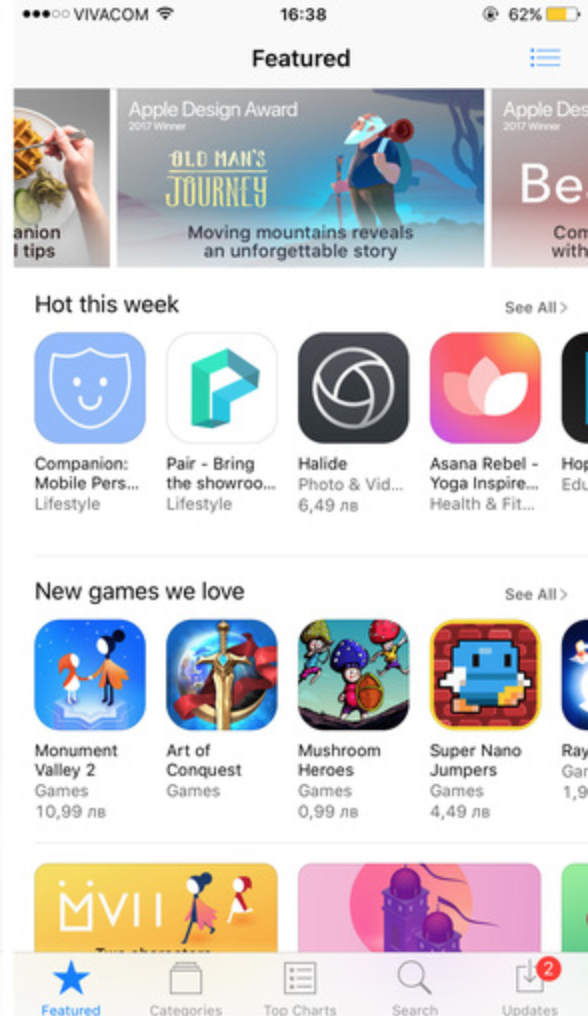
This course is for those who are interested in making websites responsive to all devices. The course assumes basic knowledge in HTML, CSS, or other basic technologies. You don't need JavaScript, but you should have a working knowledge of HTML. An introduction to HTML and CSS course is available for beginners. The course covers the history and principles of responsive design as well as adaptive design. The course will show you how to create responsive layouts that can adapt to different screen sizes. It also helps you get creative with images, so you can use them in a way that suits the devices they are being used on.
Property with max-width
The max-width property defines the maximum width of an element. The content will move to the next line if the max-width value is greater than that. A smaller value will have no effect on content. Here is an example showing the default value for this CSS property. You can use this property to adjust the width of your element to a smaller value. This CSS property allows you to create responsive web designs, regardless of whether your web pages were created for desktop computers or mobile phones.

CSS overflow:x:auto style
The CSS document's property overflowx specifies whether the content will not be clipped after it reaches the boundary. Although the default value is visible, you can change it to hide or make it scrollable. It is a CSS 3 property. This is not web standard. If the containing element does not have an overflow-x property it will use its parent's.
CSS rems
CSS can alter the look and feeling of your site beyond what it looks like in terms of its height, width and color. When combined with media queries, CSS can automatically adjust content based on screen size and resolution. A media question works in the same way as an "if” clause from a programming program. It verifies that the viewport is sufficiently wide before rendering the content. If you have a full-width image class, the browser will automatically fill 90% of the screen and prioritize content with wide margins.
CSS media queries
CSS responsive media inquiries allow you create layouts that are adaptable to different device sizes. You can use media questions to change the color or body text according the viewport size. You can create a media query by opening the source code in a web browser. Media queries can include minimum or maximum values. It is more efficient to include minimum and maximum values when designing responsive websites. Below are some CSS responsive media requests:
Layout and design of a responsive site
Your website can adapt to the size of the device that it is being viewed on with responsive design. Your website might be three columns wide at the desktop, two columns at the tablet, and one column at the mobile. CSS allows you the flexibility to design different layouts for different screen sizes. While there are some disadvantages to this approach, it is a great method to create responsive websites for a wide range of screen sizes.

Resize images
When developing websites, one of the most frequently asked questions is how to use CSS to resize images. There are several ways to do this. CSS is a language that allows you to adjust the size of your images depending on their display screen. Here are some examples. This article will cover some of the more common techniques, along with some tips and tricks to make them responsive.
FAQ
Is WordPress a CMS?
Yes. It's a Content Management System. CMS allows you to manage the content of your website from within a web browser, instead of using applications like Dreamweaver and Frontpage.
WordPress is completely free! Hosting is included in the price, but you don't need to pay anything else.
WordPress was originally created to be a blogging platform. But WordPress now offers many more options, such as eCommerce sites or forums, membership websites and portfolios.
WordPress is simple to install and configure. The installation file must be downloaded from the website and uploaded to your server. Then, you simply visit your domain name through your web browser and log in to your new site.
After installing WordPress, you'll need to register for a username and password. Once you log in you'll be able access all your settings via a dashboard.
You can now add pages, posts and images to your site. This step may be skipped if you feel confident editing and creating content.
If you prefer to work with a professional web designer, you can hire them to manage the entire process.
How Much Does it Cost to Create an Ecommerce Website?
This will depend on whether you are using a platform or a freelancer. eCommerce websites start at about $1,000.
Once you choose a platform to use, you can expect a payment of anywhere from $500 to $10,000.
Templates are usually not more expensive than $5,000, unless you have a specific purpose. This includes any customizing you do to your brand.
Can I use a Template or Framework on My Website?
Yes! When creating websites, many people use pre-built templates. These templates contain all the code that is required to display information.
The following are some of our most-recommended templates:
WordPress - the most widely used CMS
Joomla - Joomla is another popular open-source CMS
Drupal - An enterprise-level solution for large companies
Expression Engine – A Yahoo proprietary CMS
You will find hundreds of templates for each platform. So it shouldn't be hard to choose the right one.
How do I choose a Domain Name?
A good domain name is vital. Without a great domain name, people will not know where to find you when they search for your product.
Domain names need to be short and simple to remember, relevant for your brand, and unique. Ideal domain names are something people would type into their browser.
Here are some tips for choosing a domain name:
* Use keywords related to your niche.
* Avoid using hyphens (-), numbers and symbols.
* Don't use.net or.org domains.
* Never use words that have already been used.
* Try to avoid generic terms like "domain" or "website."
* Check it's always available.
Which platform is best for designing a website?
WordPress is the best platform for creating websites. It has all the features required to create a professional-looking website.
Themes are easy to install and customize. You can choose from thousands of free themes available online.
Plugins are another way to add functionality. They can do everything, from adding social buttons to creating contact pages to adding forms.
WordPress is very user-friendly as well. You don't even need to know HTML code in order to modify your theme files. You just need to click on the icon and choose what you want to modify.
Although there are many platforms out there, I prefer WordPress. It's been around since the beginning and is still being used by millions of people worldwide.
How to Create a Static Website
There are two options available to you when building your first static website.
-
Content Management System (a.k.a. WordPress: This software can be downloaded and installed on your computer. This software can then be used to create an indispensable website.
-
A static HTML website is created by you. If you already know HTML, it is simple to do.
It is worth hiring an expert if you want to build large websites.
But starting, you should probably go with option 2.
Is it more likely to be hired as a web developer if I have a good portfolio?
Yes. It is important to have a portfolio when applying for web design or development jobs. Portfolios must showcase your skills and experiences.
Portfolios are usually made up of examples of past projects. You can include anything that demonstrates your skills. Your portfolio should include everything: wireframes and mockups as well as logos, brochures, websites, apps, and even logos.
Statistics
- Is your web design optimized for mobile? Over 50% of internet users browse websites using a mobile device. (wix.com)
- The average website user will read about 20% of the text on any given page, so it's crucial to entice them with an appropriate vibe. (websitebuilderexpert.com)
- When choosing your website color scheme, a general rule is to limit yourself to three shades: one primary color (60% of the mix), one secondary color (30%), and one accent color (10%). (wix.com)
- Studies show that 77% of satisfied customers will recommend your business or service to a friend after having a positive experience. (wix.com)
- It's estimated that in 2022, over 2.14 billion people will purchase goods and services online. (wix.com)
External Links
How To
What is website hosting?
Website hosting describes where visitors go when they visit a site. There are two types.
-
Shared hosting - This is the cheapest option. Your website files are stored on a server that is owned by another person. When customers visit your site, their requests travel over the Internet to that server. The server owner then forwards the request to you.
-
Dedicated Hosting - This option is the most costly. Your website will reside on a single server. There are no other websites sharing space on the server. Your traffic remains private.
Shared hosting is preferred by most businesses because it's cheaper than dedicated hosting. The company hosting the server will provide the resources necessary to manage your website.
But there are pros and cons to both options. These are the key differences between them.
Sharing Hosting Pros
-
Lower Cost
-
It's easy to set up
-
Frequent updates
-
It can Be Found On Many Web Hosting Companies
Hosting shared can be as low as $10 per month. This price often includes bandwidth. Bandwidth is how much data you can transfer to the Internet. Even if you are only uploading photos to your blog site, high data transfer rates can still cost you extra.
You'll soon discover why you paid so much more for your previous host when you get started. The majority of shared hosts offer limited customer support. While they may occasionally assist you in setting up your site and other tasks, after that you are all on your own.
A provider with 24-hour telephone support is a good choice. They will attend to any issues you have while you sleep.
Cons of dedicated hosting
-
More Expensive
-
Fewer Common
-
Specific Skills Required
With dedicated hosting you will have everything you need to manage your website. You won't worry about how much bandwidth you are using or how much RAM (random Access Memory) you have.
This means that upfront, you'll need to spend a bit more. You'll soon realize that your business is self-sufficient once it's online. You'll become an expert at managing your servers.
Which Is Better For My Business:
The answer depends on what kind of website you want to create. Shared hosting is best for those who only need to sell products. It's very easy to setup and maintain. A server shared with several other sites means that you will receive frequent updates.
If you want to create a community around a brand, dedicated hosting may be the best choice. Instead of worrying about traffic, you can concentrate on building your brand.
Bluehost.com has both. They offer unlimited data transfers per month, 24/7 support and free domain registration.